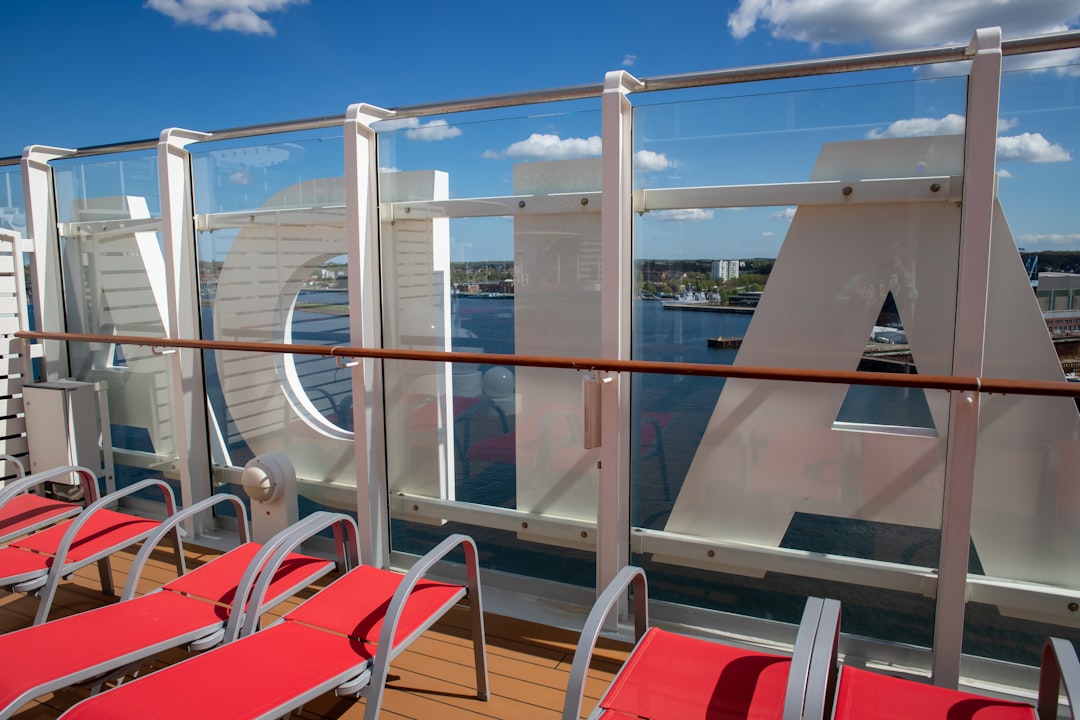

Engage prospects with a scan and streamline customer engagement with FREE QR code marketing tools by Sona – no strings attached!
Create a Free QR CodeFree consultation

No commitment

Engage prospects with a scan and streamline customer engagement with FREE QR code marketing tools by Sona – no strings attached!
Create a Free QR CodeFree consultation

No commitment
QR codes have become essential tools for creating seamless bridges between physical and digital interactions in today's digitally driven world. For deck refinishing services, QR codes offer a practical and effective way to capture high-intent leads, provide instant access to information, and convert offline touchpoints into measurable digital actions. As customers increasingly expect on-demand experiences, leveraging QR codes provides businesses with a streamlined way to drive conversions without additional barriers or app downloads.
Whether your goal is to capture more deck restoration leads at home shows, drive direct inquiries from mailers, or allow on-the-spot quotes via outdoor advertising, QR codes deliver flexibility and efficiency. Deck refinishing teams have struggled with slow, manual lead capture in the past; paper forms get lost, and quality prospects can slip away without follow-up. By integrating QR campaigns, businesses engage prospects instantly and collect actionable data, ensuring valuable leads enter your pipeline instead of competitors'.
This guide explores proven strategies and workflows for using QR codes in deck refinishing services to consistently capture high-quality leads, maximize your marketing spend, and enhance every stage of the buyer journey.

Traditional lead capture methods in deck refinishing services such as printed sign-up sheets or generic flyers often result in missed high-value prospects. Many interested homeowners hesitate to fill out forms or forget to follow up after picking up a brochure. In high-traffic environments like home shows, these lost connections can add up to significant unrealized revenue.
QR codes help you convert those fleeting moments into qualified leads with minimal friction. A single scan can move a homeowner from curiosity to action, whether that action is an estimate request, a portfolio view, or a maintenance checklist download. When paired with a platform that tracks scans and integrates with your CRM, every scan becomes an attributable touchpoint that your team can follow up on in minutes instead of days. Link campaigns to Sona QR for scan tracking, attribution, and CRM sync.
Modern QR solutions allow you to build a closed-loop reporting process, where every scan becomes a trigger for fast, targeted follow-up. The result is a tighter funnel with less waste and higher conversion from the same physical marketing assets you already pay for.
Deck refinishing services face persistent challenges: variable customer timelines, hard-to-track offline interest with offline attribution, and difficulty measuring which marketing channels drive bookings. Generic website analytics often fall short because anonymous traffic from local advertising or mailers is rarely tracked, leaving teams unsure where to invest their marketing resources. QR codes fill this gap by turning each offline impression into a measured digital interaction.
Another factor is homeowner behavior. Many homeowners research over weeks and months, collecting bids and asking neighbors for recommendations. They often see your job site sign or truck several times before taking action. A QR code shortens the distance from awareness to conversion by giving people an immediate, low-effort way to express interest, get answers, and share contact information without having to search for your website.
Acting quickly on customer intent is essential. QR codes help deck refinishing businesses respond faster and smarter than traditional methods, which often rely on delayed or incomplete data.

Choosing the right QR code format impacts your ability to convert offline engagement into leads. Many companies default to basic web links and miss out on segmentation and deeper interaction. By matching format to intent, you increase response and capture more useful data for sales.
Deck refinishing professionals typically benefit from formats that reduce the steps between scan and action. As you evaluate formats, consider what information a homeowner needs at that moment and how to make their next step simple. Dynamic QR codes are ideal for marketing use since you can adjust destinations and collect analytics without reprinting.
Dynamic QR codes allow you to update campaign destinations as your needs shift, which helps prevent waste from stale offers and aligns your physical assets with current promotions or service priorities.

Most deck refinishing leads stem from offline moments: neighborhood drive-bys, conversations at home shows, and direct mail pieces on kitchen counters. Historically, these touchpoints offered little measurable return, and interested prospects were hard to attribute to specific campaigns. Strategic QR placement turns these passive interactions into trackable next steps.
When you treat every physical asset as a digital gateway, you multiply your surface area for lead capture. Start by auditing your most visible assets and the contexts where homeowners pause. Then add QR codes with clear value propositions and destinations that match the moment.
Thinking beyond brochures, deck refinishing services can transform everyday assets into engines for demand generation and insight gathering.

QR codes excel when tied to specific actions that match where a homeowner is in the journey. By curating a short list of high-yield use cases, your team can deploy codes with purpose and measure results consistently across campaigns and seasons.
Start with three to five priority use cases that align with your growth goals, then expand as you identify what works. For each use case, define a destination, a call to action, and a data capture plan so you can segment scanners for follow-up.
Each use case can be customized with dynamic QR solutions, enabling A/B tests of offers and easy updates as your focus shifts between acquisition, upsell, and reputation building.
Deck refinishing marketers often see interest without immediate conversions, especially when homeowners are early in the research phase. QR scans are intent signals that help you understand who engaged, where, and why. When you deploy unique codes across touchpoints, you can segment your audience automatically and run precise retargeting playbook that matches their interests and timing.
Segmentation increases relevance, which raises conversion rates and prevents over-messaging. By syncing scan data to your CRM and ad platforms, you can trigger the right next step based on real behavior instead of assumptions. This approach also improves reporting since you can attribute revenue back to specific scan cohorts.
For deck refinishing specifically, segment homeowners by service interest such as full refinish, cleaning, or railing replacement, as well as by neighborhood and home age. These distinctions let your team prioritize the highest likelihood bookings and tailor educational content to the questions buyers care about most.
QR codes are connectors that bring print, events, and out-of-home into your digital ecosystem. When integrated across channels, they help you measure performance and engage customers in real time. Without QR links, it is difficult to attribute print spend or optimize physical placements.
A connected approach means choosing destinations that advance the journey in context. A code on a vehicle wrap might route to a quick quote form, while a code on a project board could showcase the exact stain used and a gallery of similar decks. Consistency in branding and calls to action across channels reinforces recognition and trust.
QR codes serve as the offline onramp to your digital marketing engine. With a centralized platform like Sona QR, you can manage all codes, monitor performance, and sync scan data with CRM and ad platforms so each scan becomes part of a cohesive, multi-channel journey. For mobile engagement on the move, consider vehicle QR codes.
Deck refinishing companies may struggle to gather clean lead data or identify which assets drive results. This checklist combines tactical execution and strategic focus so your first campaign launches smoothly and scales with insight.
Treat this as a repeatable workflow rather than a one-time project. As you learn which placements and messages work best in your markets, you can refine offers, iterate on creative, and roll out successful patterns across neighborhoods and seasons.
A big challenge in deck refinishing is tying offline engagement to business outcomes. Without a closed-loop system, it is nearly impossible to prove which materials or channels drive revenue. QR tracking and analytics solve this by turning each scan into structured data that can be analyzed, acted on, and attributed to pipeline.
The key is to move beyond counting scans to understanding what happens after the scan. You want to know which scan sources lead to booked estimates, which offers convert better by neighborhood, and how long it takes scanners to move from first touch to contract. These insights inform budget allocation and message strategy for future campaigns.
Technology now empowers deck refinishing firms to close the loop on offline to online marketing and see exactly which touchpoints fuel revenue. This level of clarity elevates QR from a novelty to a core component of your performance strategy.
Without active management, QR code campaigns can suffer from low scan rates and limited insight. A few practical adjustments can dramatically improve performance, especially in a service business where timing and trust matter.
Focus your efforts on clarity, convenience, and follow-through. Make it obvious what scanners will receive, reduce the steps to value, and ensure consistent follow-up across teams. Small operational wins add up to a measurable lift in lead volume and quality.
Treat QR deployment as a data-driven process to maximize engagement and return on every touchpoint. With Sona QR, you can generate and track your first codes quickly, then build automation as results come in.

Effective QR programs in deck refinishing share three traits: clear value, smart placement, and rigorous tracking. The most successful teams build lightweight workflows that reduce effort for homeowners while generating high-quality data for marketing and sales.
Use these examples to spark your own ideas. Start small with one or two placements, capture baseline metrics, then scale into additional channels and neighborhoods as you learn.
These examples show that creative QR deployment transforms every physical asset into measurable growth. The common thread is using scan data to learn, iterate, and double down where performance is strongest.
Experience in the field reveals common traps such as low visibility, vague CTAs, and a lack of data integration. Avoid these pitfalls by designing QR campaigns with the end in mind: a measurable conversion event and a smooth handoff to sales or service.
Consistency across placements is also crucial. Use the same CTA language and visual style so homeowners recognize your brand and know what to expect. Reinforce that scanning is safe and valuable by previewing the benefit clearly next to the code.
Reduce friction, increase data insights, and align QR deployment with business goals for measurable results. When your codes are easy to scan and clearly connected to next steps, scan rates and conversion both rise.
QR codes are redefining how deck refinishing services identify, capture, and convert high-value leads throughout the buyer journey. As more touchpoints move from physical to digital, leaders discover that immediate engagement and actionable analytics are essential to thriving in a competitive field. By treating every flyer, sign, truck, or invoice as a digital portal, you create more opportunities for long-term relationships and revenue.
Making QR codes a core part of your deck refinishing workflow unlocks levels of customer engagement, data, and conversion tracking that print alone cannot match. Each scan represents real interest, and modern tools ensure that this intent is captured and used to inform ongoing marketing and sales strategy. To prevent missed opportunities and consistently turn offline encounters into high-quality leads, weave QR strategies throughout your operations and measure their impact from first scan to signed contract. With Sona QR and Sona.com, you can get started quickly, unify data across channels, and attribute revenue with confidence. Start creating QR codes for free.
QR codes have transformed deck refinishing services from traditional marketing efforts into dynamic, measurable customer acquisition channels. Whether it’s capturing high-quality leads on-site, enhancing customer engagement through instant access to service details, or streamlining appointment bookings, QR codes replace guesswork with real-time data that turns every interaction into a powerful growth opportunity. Imagine knowing exactly which brochures or signage drive the most inquiries—and adjusting your campaigns instantly to maximize effectiveness.
With Sona QR, creating dynamic, trackable QR codes is effortless. Update your marketing materials without reprinting, monitor scan activity in real time, and link every interaction directly to your sales pipeline. No more missed leads or wasted marketing spend—just smarter, data-driven results that grow your deck refinishing business efficiently. Start for free with Sona QR today and turn every scan into a loyal customer.
QR codes convert offline marketing touchpoints like signs and mailers into measurable digital interactions, enabling instant lead capture, CRM integration, and faster follow-up.
Use QR codes on job site signs, vehicle wraps, mailers, event booths, and completion materials to link prospects to estimate requests, portfolios, maintenance tips, reviews, and referral offers.
Dynamic QR codes allow you to update landing pages, swap offers, collect analytics, and run A/B tests without reprinting materials, keeping campaigns flexible and cost-effective.
By using QR codes with scan tracking and CRM integration, companies can attribute leads to specific channels, measure engagement, and analyze which assets generate the most conversions.
Define clear objectives, choose use cases, select static or dynamic codes, design and test for scannability, deploy across key channels, train teams, and monitor analytics to optimize results.
They provide immediate access to mobile-optimized forms, contact info, or resources with a simple scan, eliminating the need to type URLs or search for information online.
Avoid low visibility placements, vague calls to action, lack of testing, missing data integration, and inconsistent messaging to ensure higher scan rates and quality lead capture.
Unique QR codes for different customer journey stages enable segmentation by scan behavior, location, and intent, which feeds into CRM and ad platforms for personalized follow-up.
Place QR codes on home show signage, direct mail, job site boards, vehicles, invoices, care guides, thank you cards, and out-of-home ads for broad and trackable exposure.
QR codes bridge offline and online channels, reduce lost leads, offer real-time analytics, enable dynamic content updates, and support automated, data-driven sales follow-up.
Use Sona QR's trackable codes to improve customer acquisition and engagement today.
Create Your FREE Trackable QR Code in SecondsJoin results-focused teams combining Sona Platform automation with advanced Google Ads strategies to scale lead generation

Connect your existing CRM

Free Account Enrichment

No setup fees
No commitment required

Free consultation

Get a custom Google Ads roadmap for your business






Launch campaigns that generate qualified leads in 30 days or less.
